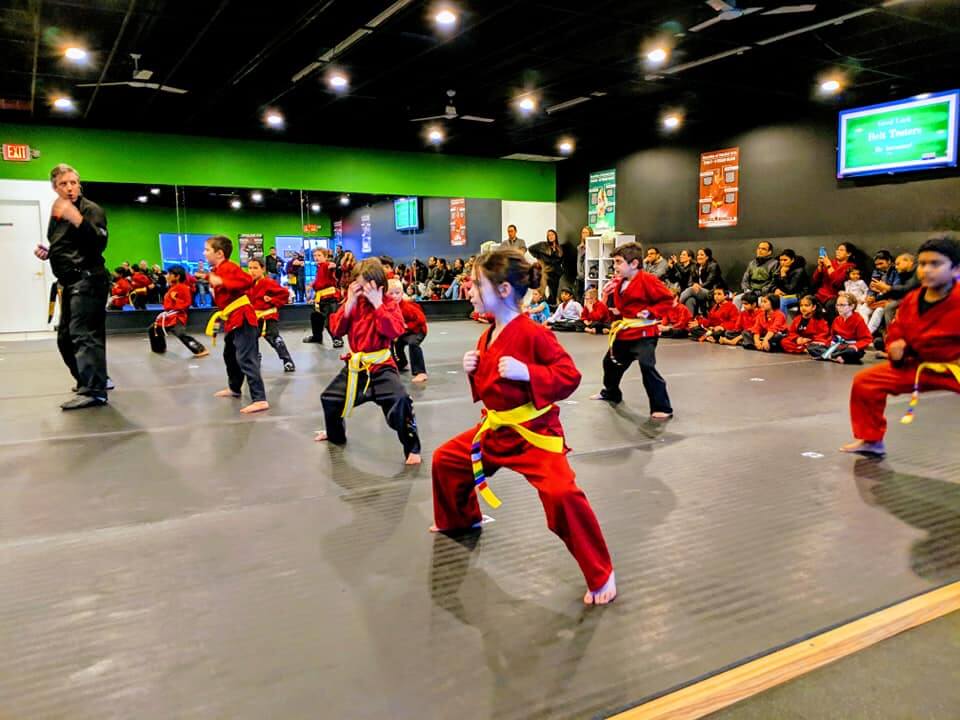Nurturing confidence in kindergarteners is like planting a garden; it requires patience, nurturing, and the right conditions to flourish.
From the tender seeds of their self-esteem to the robust trees of their abilities, every action of a parent, teacher, or caregiver adds to the rich soil of their future.
It’s in these formative years that children learn the language of self-belief, find the melody in their voices, and sketch the outlines of their potential.
Tailoring our approaches to meet their individual needs while embedding encouragement in our daily interactions is more of an art than a science.
Keep reading to discover 25 strategies designed to build confidence in kindergarteners’ lives.
Key Takeaways
- Unconditional Love and Positive Reinforcement Are Foundational in Building a Kindergartener’s Confidence
- Teaching Children the Value of Perseverance and the Importance of Learning From Mistakes Fosters a Growth Mindset
- Encouraging Self-Expression and Acknowledging a Child’s Emotions Strengthens Their Emotional Intelligence and Self-Assurance
- Giving Kindergarteners Age-Appropriate Responsibilities and Choices Cultivates Their Sense of Independence and Self-Efficacy
- Surrounding Children With Positive Role Models and a Supportive Community Enhances Their Confidence and Sense of Belonging
1. Ensure they know your love is unconditional.

In the vibrant tapestry of early education, the seeds of confidence are sown with threads of unconditional love. Kindergarteners, at the cusp of their academic journey, are like tender saplings swaying in the winds of a new environment: school. These young learners thrive under the sunshine of parental affection, which assures them that their value does not hinge on achievements or mistakes. It’s this assurance that acts as the fertile soil from which their self-esteem blossoms, empowering them to face the challenges of learning with resilience.
Expressing unconditional love, however, stretches beyond mere words and embraces actions that paint a picture of unwavering support. For instance, when a child fumbles through their first attempts at reading a picture book or stumbles over the steps of subtraction, how a parent or teacher responds can either fortify or fracture their budding confidence. A gentle encouragement, a smile, or a word of praise: these are the brushstrokes that create a masterpiece of confidence in a child’s heart.
To truly anchor this notion of unconditional love in the fertile ground of a child’s psyche, storytelling can be a potent tool. Stories, with their rich tapestry of characters, challenges, and triumphs, mirror the complexities of life. They teach kindergarteners that obstacles are but stepping stones on the growth path:
- Fables that highlight the virtue of perseverance in the face of failure whisper to them that falling and rising again is a part of learning.
- Tales of friendship and empathy weave into their minds the importance of community and understanding, providing a safe space for emotional expression.
- Stories of heroes who overcome fears imbue them with the courage to face the unknown, underscoring the lesson that their efforts, not the outcomes, define their worth.
In every story shared, every book read together, and every mistake turned into a learning moment, the message should be crystal clear: “You are loved, no matter what.” This mantra, repeated through actions and reinforced through consistent, positive feedback, builds a fortress of confidence around a kindergartener’s heart. It teaches them that their value transcends the realm of school or homework, securing it in the immutable truth of parental love. With this as their foundation, they step boldly into the world of education, ready to explore, learn, and grow.
With hearts brimming with unconditional love, a new chapter unfolds. Now, let’s weave words of empowerment into their very essence.
2. Practice positive self-talk with them.
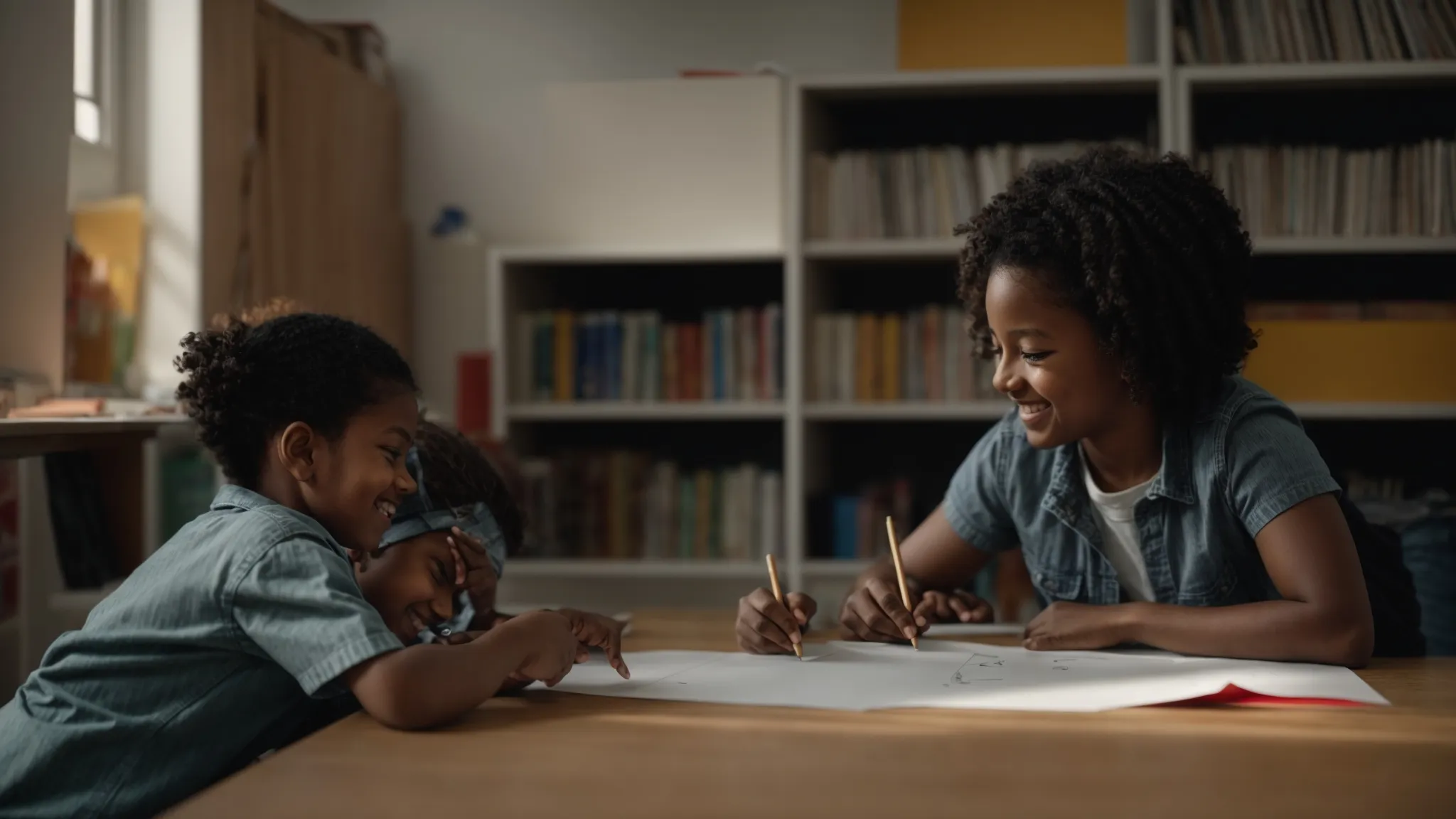
Embarking on the journey of positive self-talk with kindergarteners plants the seed of a resilient mindset, crucial for their growth and empowerment. These fledgling minds, absorbing words and emotions like sponges, benefit immensely from being taught the language of self-encouragement. This process begins by introducing them to simple, affirming phrases that they can whisper to themselves in moments of doubt or challenge: I can do hard things, mistakes help me learn, or I am brave.
Parents and educators play a pivotal role in modeling this positive self-dialogue. Witnessing a role model articulate their thought process aloud, transforming negative self-talk into empowering affirmations, acts as a powerful lesson. It demonstrates that the path to overcoming obstacles is paved with patience and self-compassion, not self-reprimand.
| Scenario | Negative Self-Talk | Positive Transformation |
|---|---|---|
| Struggling with a math problem | “I’ll never get this right.” | “I’m learning something new, and it’s okay to take my time.” |
| After making a mistake | “I always mess up.” | “Mistakes help me grow. I’ll try a different way.” |
| Feeling shy in a group | “No one wants to be my friend.” | “I can be a good friend. Maybe I can start by smiling.” |
This transformation of thought, from harbingers of defeat to messengers of optimism, weaves a safety net of psychological resilience. It reinforces the message that their self-worth is not tied to perfection but to their willingness to embrace challenges and learn from them. The more a child practices this art of positive self-talk, the more natural it becomes, embedding a mindset that views life through a lens of possibilities rather than limitations.
To cement this vital skill, regular exercises that bring attention to the language we use about ourselves can be highly beneficial. Through role-playing games, drawing, or journaling, children can explore and express their inner dialogue, learning to recognize and pivot from self-doubt to self-encouragement. This exercise not only bolsters their confidence but also equips them with a tool for mental well-being that will serve them throughout life.
As we tread further on this journey, let’s not forget the magic woven by words uttered directly to a person. Saying their name can be the key that unlocks a door to their world.
3. Address them by their name.
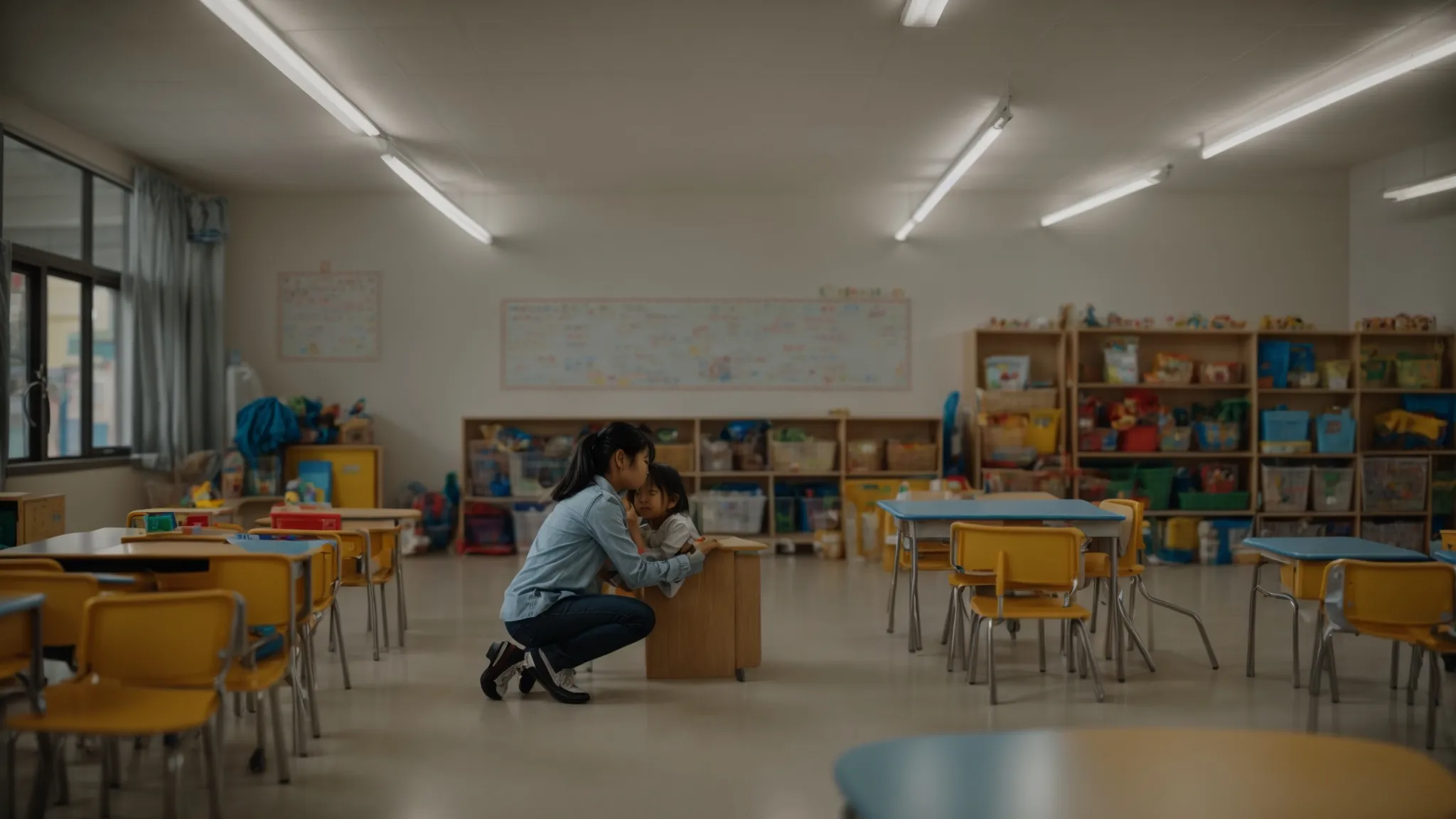
Within the bustling hive of activity that a classroom or home can become, addressing a kindergartener by their name is like casting a magic spell of importance upon them. It signals to the young learner that they are seen and valued as an individual, not just as another face in the crowd. This simple act is a cornerstone in the architecture of their self-esteem, constructing a sense of identity and belonging that is crucial for their development.
When a teacher leans down, looks a child in the eyes, and uses their name, it’s as if they’re planting seeds of confidence in fertile soil. This practice fosters a personal connection, making the child feel recognized and respected. It’s a testament to the power of personal recognition in nurturing a child’s self-worth and can dramatically change the dynamic of the interaction, imbuing it with a sense of warmth and security.
The repetition of this personalized attention acts as the sunshine necessary for the seeds of confidence to grow. Over time, this focused interaction helps kindergarteners to internalize their value in their community, whether in school or at home. They begin to understand that their thoughts and emotions hold weight, encouraging them to participate more actively and share their ideas without fear of being overlooked or ignored.
Moreover, this tailored approach can significantly mitigate feelings of anxiety or fear that often accompany new experiences or challenges. Knowing that they are recognized as individuals gives them the courage to face obstacles, ask questions, and make mistakes without the fear of losing their teacher’s or parent’s approval. In essence, this practice is a vital component of teaching children not only their names but also the invaluable lesson that they matter profoundly in the vast world around them.
4. Give them age-appropriate “special tasks” to help you out.
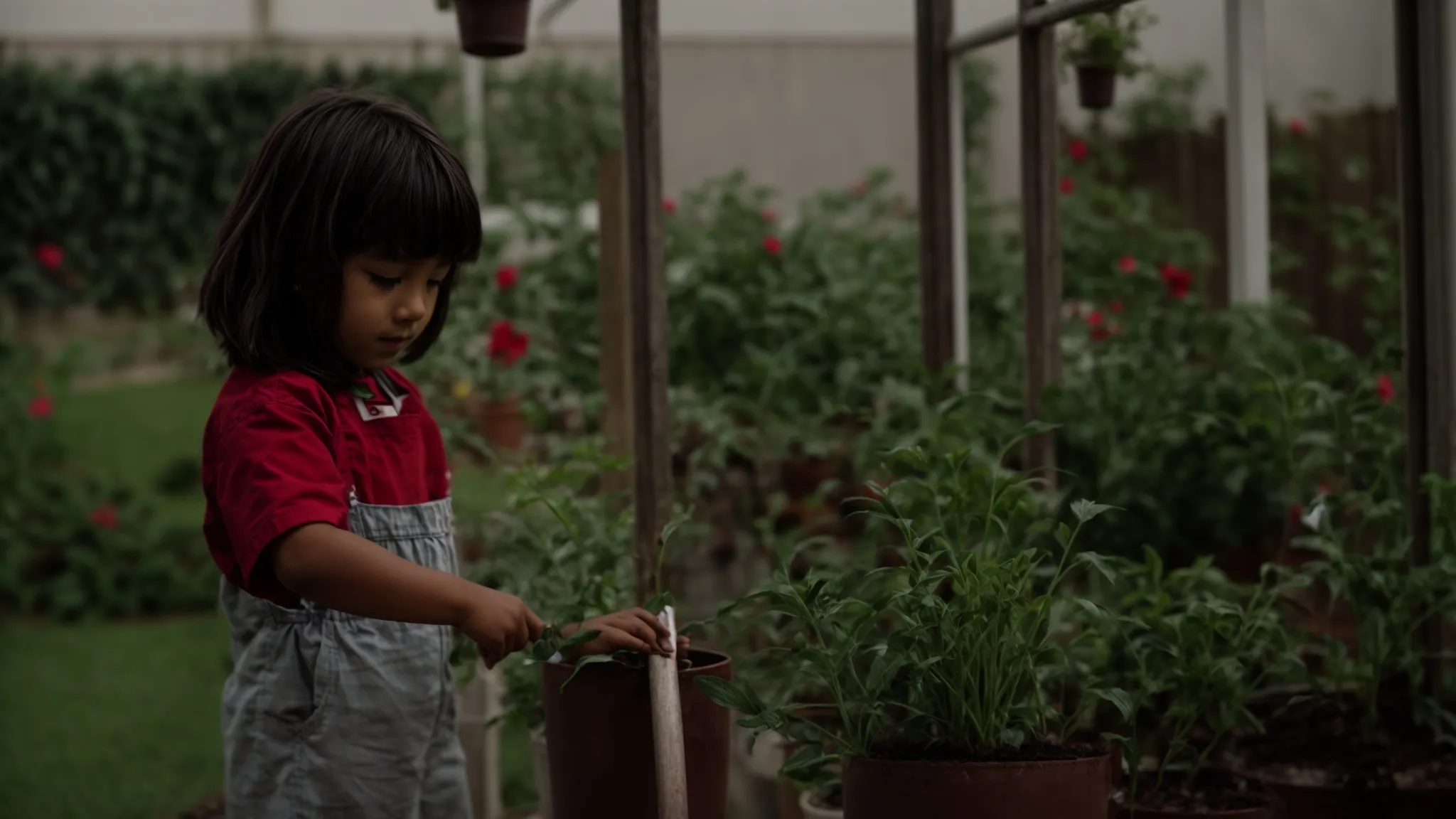
Entrusting kindergarteners with age-appropriate “special tasks” is like handing them the keys to a kingdom of self-reliance and pride. When a parent or teacher delegates small, manageable responsibilities to these young ones, it sends a powerful message: their contributions are valuable. This practice lays the foundation stone for an unshakeable edifice of confidence, as they beam with pride over the trust bestowed upon them.
Imagine the glow on a child’s face when they complete a task, like tidying up the book corner or helping to set the table for a meal. These moments are the mortar and bricks building up their sense of accomplishment and independence. Such tasks, carefully chosen to be within their capabilities, encourage kindergarteners to stretch their wings within a safe nest, fostering a growth mindset that cherishes effort and improvement over perfection.
The act of celebrating these small victories is crucial in cementing the value of their efforts. A parent’s or teacher’s acknowledgment, a simple word of praise or a high five, acts as a gentle rain nurturing the seeds of self-esteem planted by these “special tasks.” This recognition not only boosts their morale but also reinforces the idea that acting as a contributing member of their community is both appreciated and rewarding.
Moreover, involving kindergarteners in these tasks introduces them to the concept of teamwork and collaboration, further expanding their social skills repertoire. It provides a tangible context for understanding how individual efforts contribute to a collective goal, laying a vital groundwork for empathy, cooperation, and leadership skills. As they navigate this shared journey of learning and growing, they acquire not just the confidence to take on challenges but also the grace to celebrate others’ contributions alongside their own.
The adventure in nurturing confidence doesn’t stop here. Next up, we delve into the magical world of playtime, where your child takes the helm.
5. Join their play (and let them lead).
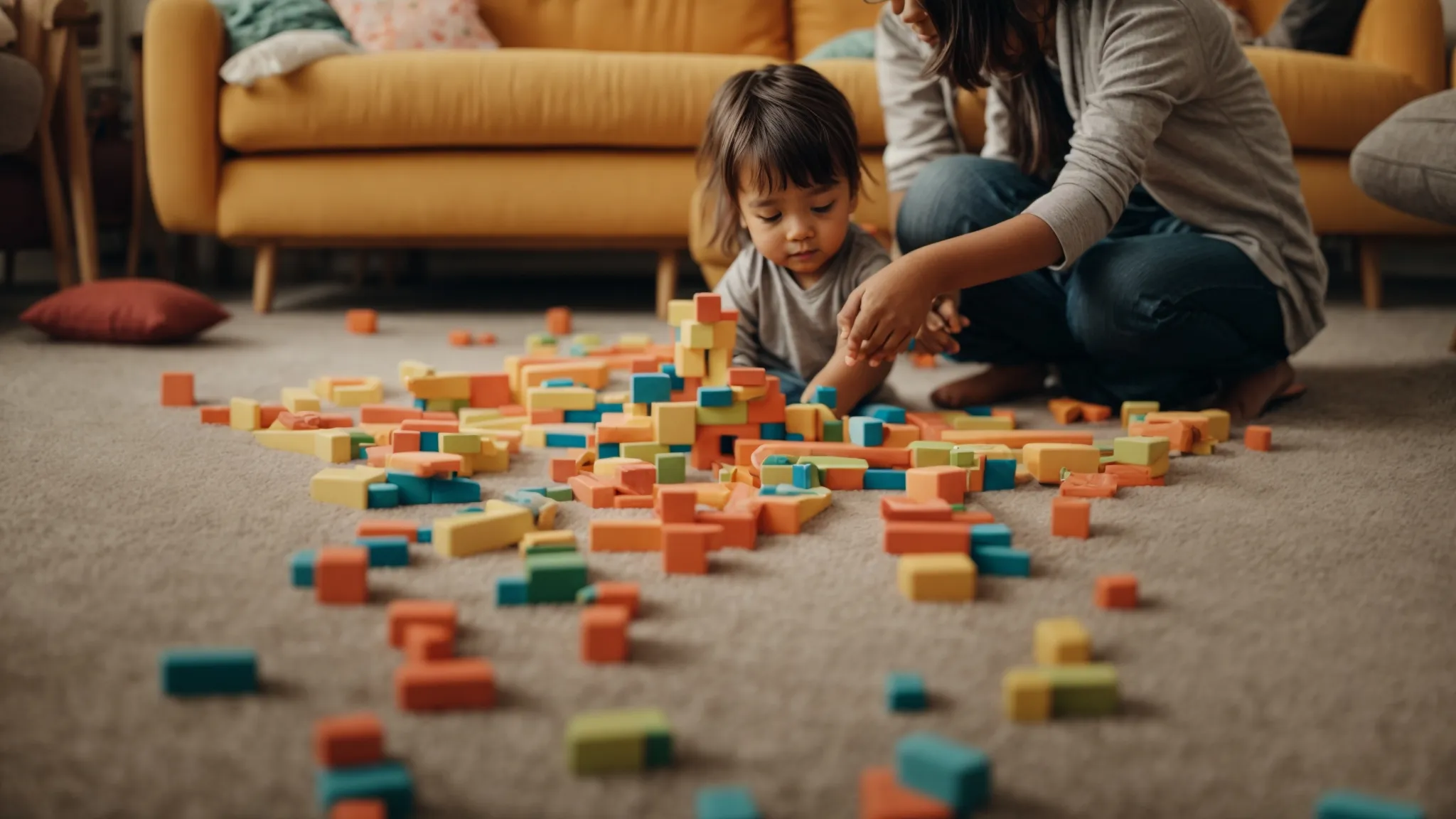
Stepping into the imaginative world of a kindergartener, when parents and teachers join their play, serves not just as an act of bonding but as a canvas for confidence to be painted on. Letting the child lead the narrative of the play is like handing them the brush to paint their world, reinforcing their sense of autonomy and importance. This shared adventure, whether it’s building castles from blocks or charting a course through make-believe forests, acknowledges their creativity and decision-making, planting seeds of self-assuredness in their young minds.
In this realm of free play, where a child is the captain of the voyage, subtle lessons in leadership and self-reliance take root. Observing an adult follow their lead, whether in a game of pretend or while constructing a towering edifice from toy bricks, instills a sense of pride and capability. It whispers to them a powerful message: your ideas are valuable and powerful enough to guide others.
This interaction, where the adult becomes the pupil in the child’s world of play, encourages kindergarteners to express themselves freely, fostering a safe space for their personalities to flourish. It’s a nurturing ground for their ability to communicate, resolve conflicts, and navigate social dynamics on their terms. Each decision they make and each command they give builds a stairway towards developing a confident and articulate individual ready to face the larger world.
Moreover, engaging in play where the child leads enriches their problem-solving skills. Deciding the next move in a game or solving a crisis in a story they’ve created allows them to apply critical thinking and adaptability in a safe, controlled environment. This empowerment through play crafts a foundation of confidence not just in their abilities to lead and make decisions, but also in their capacity to tackle challenges, turning obstacles into opportunities for growth.
Diving deep into their world of imagination, we’ve unlocked the door to mutual understanding and joy. Next up, embark on a transformative journey to bolster your confidence, setting the stage for even more enriching experiences together.
6. Focus on improving your confidence.
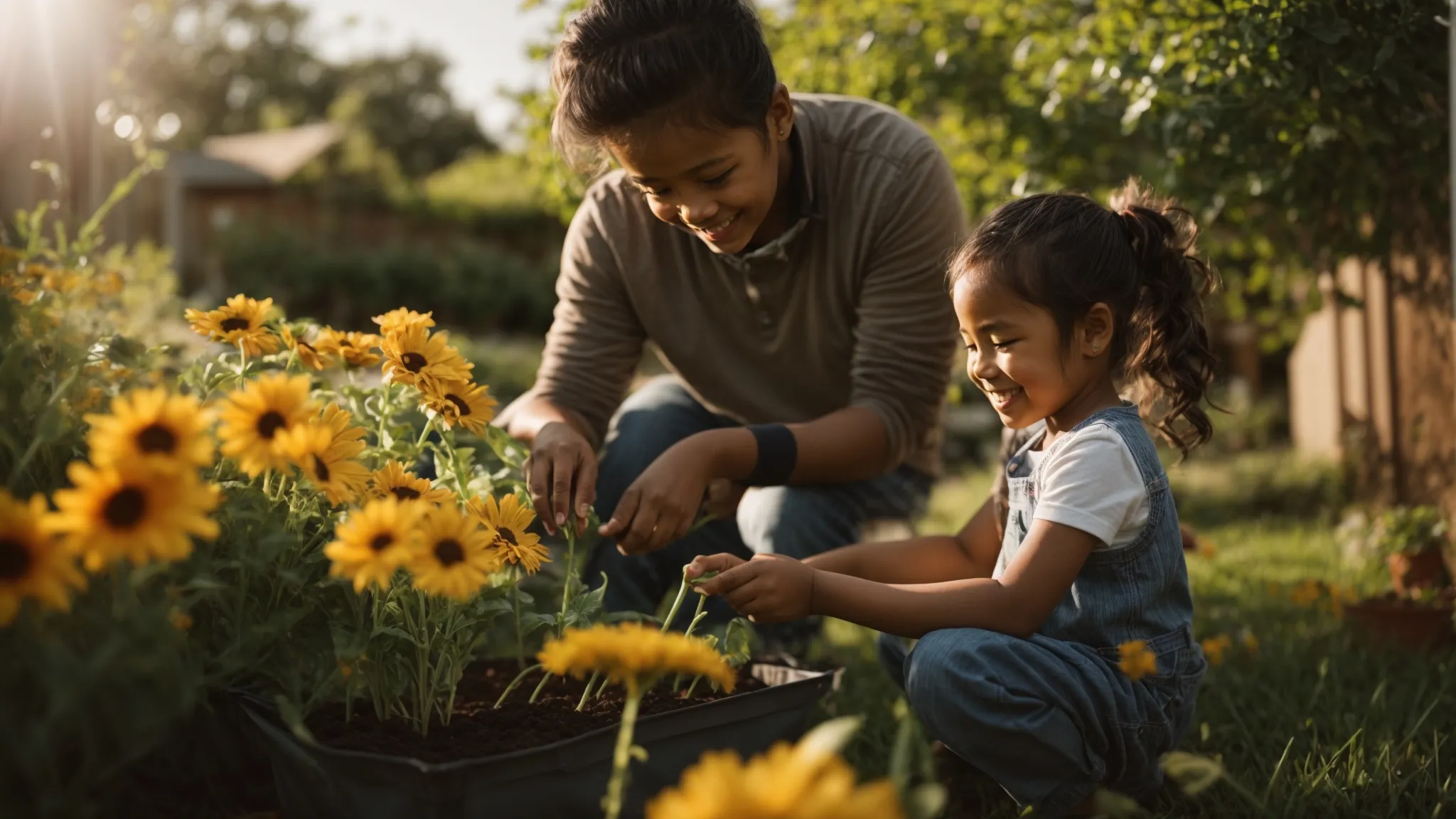
In the grand tapestry of childhood education, the confidence exuded by parents and teachers weaves itself into the fabric of a kindergartener’s psyche. These young learners, observant as fledgling birds, often mirror the confidence levels of their adult role models. Therefore, embarking on a personal quest to bolster one’s confidence is not just self-improvement; it’s laying down the stepping stones for a child’s self-assurance. This journey, marked by self-reflection and personal growth, becomes a beacon, guiding children by example.
Embracing challenges with an open heart and a will to overcome sets a powerful precedent for kindergarteners watching from the sidelines. When a parent or teacher displays resilience in the face of adversity, the lesson imprinted on young minds is invaluable. It teaches them that obstacles are not roadblocks but opportunities to grow stronger, nurturing a mindset that views challenges as components of success rather than signs of failure.
Celebrating one’s achievements, no matter how small, serves as a live demonstration of taking pride in one’s efforts. This act of self-recognition is a crucial lesson in confidence-building for kindergarteners, showing them the importance of acknowledging their progress and valuing their hard work. By embodying this principle, adults illustrate the joy found in achievement and the empowerment that comes with self-appreciation, encouraging children to follow suit.
Lastly, the journey towards enhancing personal confidence is an exercise in modeling positive self-talk. When kindergarteners hear their caregivers speak kindly and encouragingly to themselves, they learn to replicate this nurturing inner dialogue. This practice fosters an environment where positive self-perception flourishes, teaching children that the words they choose to describe themselves can either be a shield against self-doubt or a sword that undermines their self-esteem.
7. Ask them for their advice or opinion.
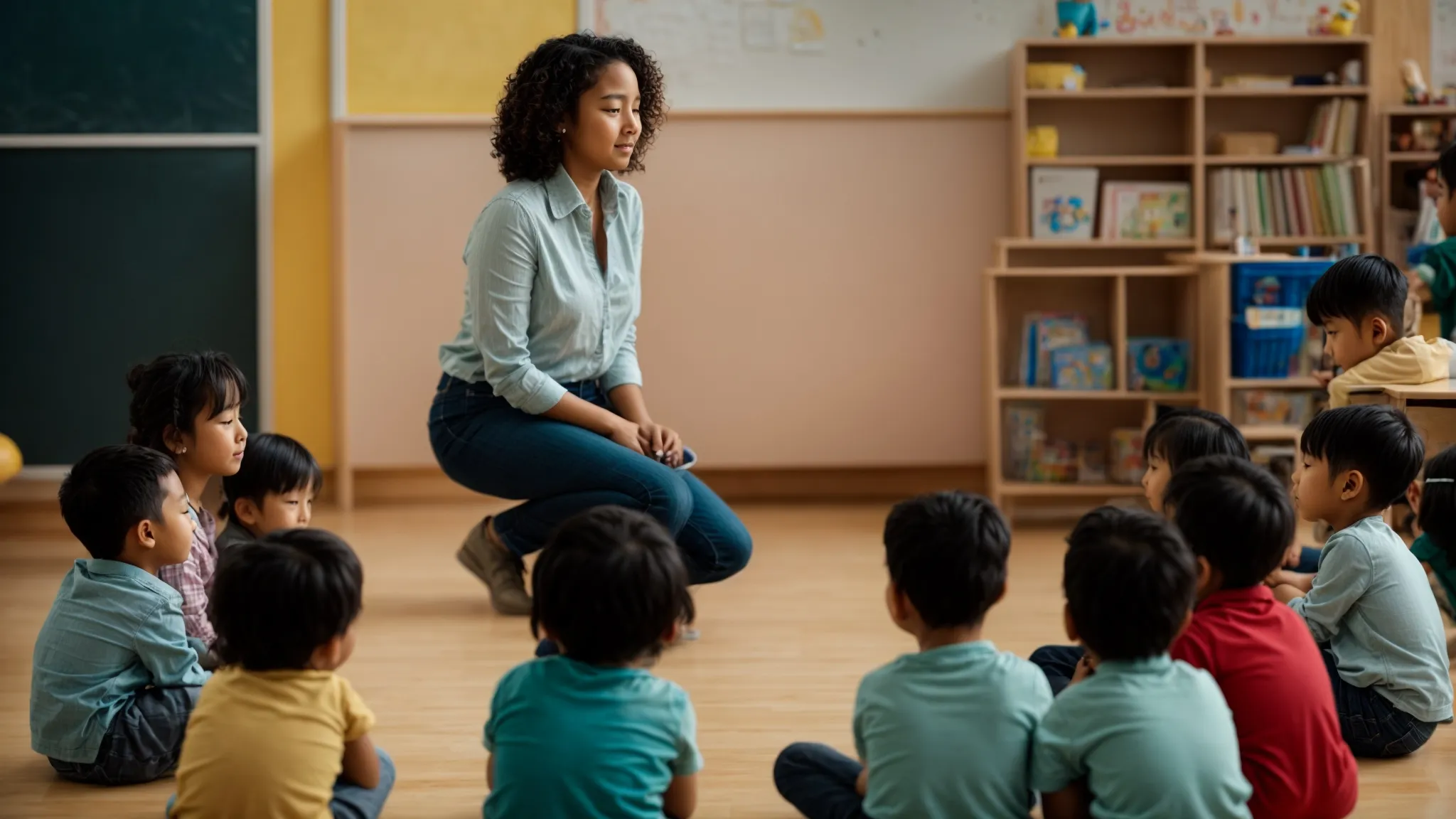
Seeking a kindergartener’s advice or opinion is like handing them a microphone in the concert of life, amplifying their voice and recognizing its value. This exchange, simple yet profound, acknowledges their capacity for thought and decision-making, laying a brick in the pathway to building their self-assurance. By genuinely considering their viewpoints, adults demonstrate that the child’s perspective holds weight, nurturing a burgeoning sense of significance and self-worth.
In the classroom or at home, when a parent or teacher asks, “What do you think we should do?” they paint the child as a valuable contributor, an artist in the vast mural of collective problem-solving. This practice not only uplifts the child’s spirit but also cultivates critical thinking and decision-making skills. It signals to the young mind that their contributions can steer the course of events, a realization that shoulders them with confidence and pride.
Engaging in a dialogue where a kindergartener’s opinion is sought out and valued fosters a sense of empowerment. It transforms their hesitation into readiness to share, their silence into eloquence. Witnessing their suggestions being implemented, or even simply acknowledged, acts as a catalyst for their self-esteem, propelling them towards more active participation and engagement in varied situations.
This strategy of empowering kindergarteners by soliciting their advice also plants seeds of leadership and autonomy. These young individuals slowly, yet surely, understand that their thoughts can influence outcomes, guiding them toward a future where they navigate the world with confidence and assurance. Encouraging them to voice their opinions thus becomes a cornerstone in building their self-confidence, equipping them with the belief that they are capable, competent, and valued members of their communities.
Engaging their minds, we invite wisdom to the table, opening a door to their world. Next, we carve out moments that sparkle with exclusivity, creating memories etched in time.
8. Make special time together.

Carving out special time to spend together with a kindergartener acts as a tangible expression of love and attention, which are foundational blocks of confidence. During these moments, whether reading a favorite book or engaging in a quiet art project, a child feels valued and heard. This one-on-one interaction affirms their importance in the bustling world, a necessary nutrient for the healthy growth of self-assurance and identity.
Engaging in play specifically tailored to their interests not only demonstrates respect for their preferences but also instills a sense of pride and ownership in their choices. When a child sees that their thoughts and interests lead the way during these special times, it speaks volumes to their worth, sewing seeds of confidence with each activity chosen. Such personalized attention enlightens them to their unique role within the family and community, elevating their self-esteem.
These dedicated periods also provide a golden opportunity for parents and teachers to observe and commend the kindergartener’s strengths and efforts. Positive feedback, shared in the warmth of a special time together, resonates deeply with a child, reinforcing their belief in their abilities. Every compliment becomes a brush stroke on the canvas of their self-image, painting a picture of competence and value.
Furthermore, making special time together a consistent part of their routine creates a stable structure of support and love. Knowing they have this secure space encourages kindergarteners to take risks and explore new challenges, aware that they have a safety net of encouragement to fall back on. This practice not only nurtures their current confidence but plants the seeds for a future of resilience and bold exploration.
9. Teach them how to set and achieve goals.
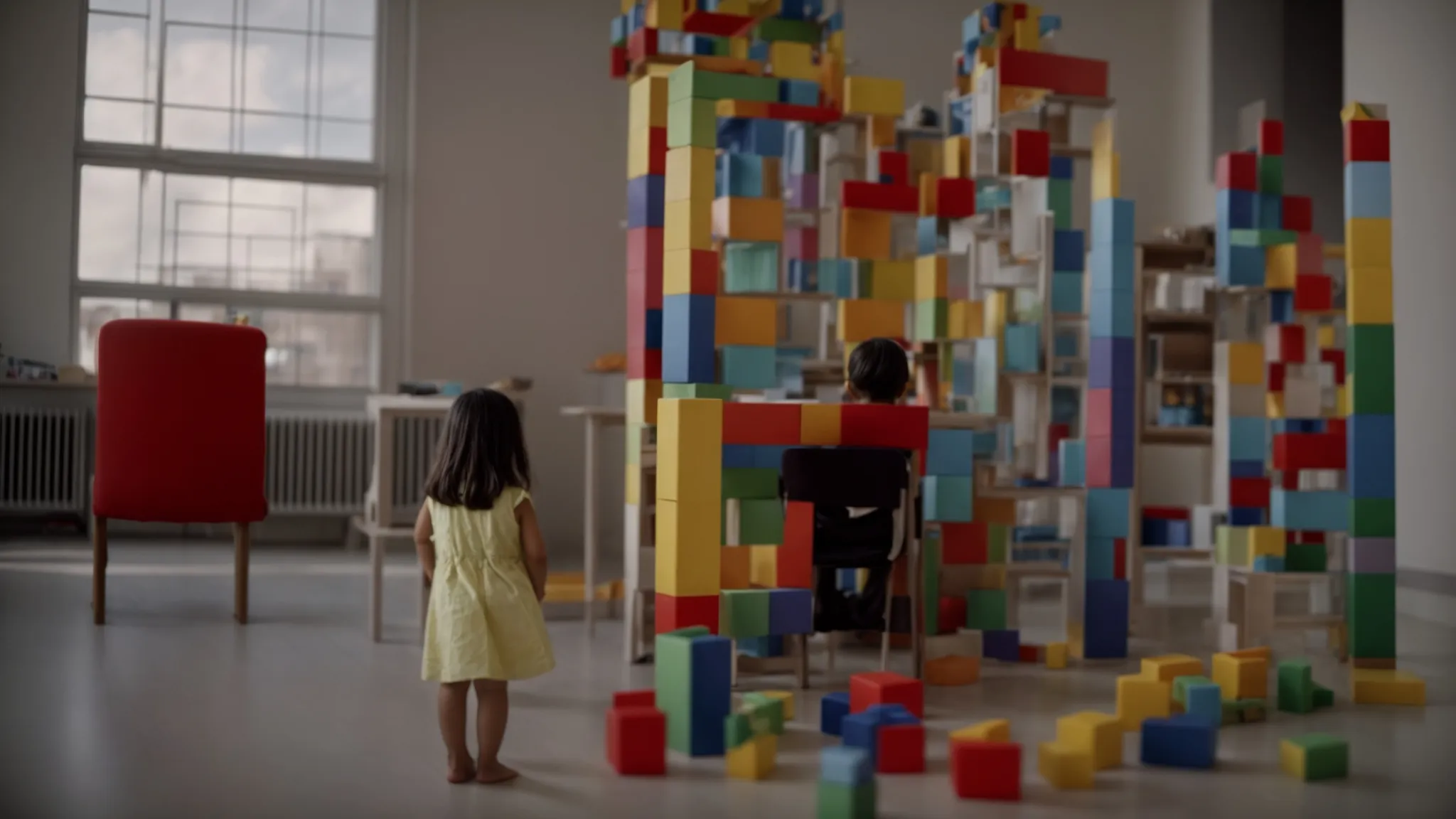
Instilling the art of goal setting in kindergarteners casts a beam of light on the path of self-confidence, illuminating their journey with milestones of achievement. By introducing them to the concept of setting achievable goals, a teacher or parent guides these young explorers through the forests of uncertainty toward the clearing of success. This practice teaches them the value of aspiration and the satisfaction derived from their realization, laying the foundation for a lifetime of purposeful ambition.
When a child sets a goal, no matter how small, and witness that they can accomplish it, they experience a surge of empowerment. This could be as simple as completing a puzzle or mastering a new word. Each achieved goal acts like a brick in the fortress of their self-esteem, showing them that their actions have the power to effect change and bring about desired outcomes. Celebrating these victories amplifies their sense of accomplishment, reinforcing their belief in their capabilities.
Guidance from adults in breaking down larger goals into smaller, manageable tasks demystifies the process of achievement. It paints a picture where daunting tasks are not insurmountable but rather a series of steps leading to the summit of accomplishment. Through this lens, kindergarteners learn that perseverance and patience are key companions on their quest, nurturing a resilient spirit attuned to overcoming challenges.
Moreover, the lesson of goal setting and achievement stretches beyond the confines of immediate success, offering a panorama of future possibilities. It instills in kindergarteners the understanding that failures are not dead ends but detours and learning opportunities on the road to success. This mindset fosters an environment where children feel safe to take risks, experiment, and explore, knowing that each step, whether forward or backward, is a valuable segment of their growth journey.
Crafting dreams into tangible goals, we lay the groundwork for tomorrow’s victories.
10. Set aside time when you give them undivided attention.

Setting aside time to offer undivided attention to a kindergartener is like watering the young roots of a tree, nurturing its growth towards the skies of self-confidence. In these moments, free from distractions, a child basks in the glow of attention, realizing their significance in the eyes of those they admire most. This dedicated interaction, where every query is met with patience and every thought acknowledged, strengthens their inner voice, telling them they are worthy of attention and respect.
During this special time, the child’s narrative takes center stage, allowing their imagination and thoughts to unfold freely. As they share stories or recount their day, the attentive listener validates their experiences, turning this shared space into a crucible for self-esteem. The act of listening intently not only demonstrates to the child that their words hold value but also empowers them to communicate more openly and confidently.
The routine of carving out periods of focused attention establishes a foundation of trust and security. Knowing that they have a steadfast pillar of support encourages the child to venture out of their comfort zone, explore new ideas, and tackle challenges head-on. It instills a deep-seated belief in their abilities and the knowledge that there is a safe space to return to, fostering resilience and boldness to seek out new experiences.
This practice also provides an excellent opportunity for positive reinforcement, a key ingredient in the recipe for building confidence. Celebrating their accomplishments, no matter how small, and acknowledging their efforts with genuine pride, showers them with the assurance needed to cultivate a robust self-image. As these moments of undivided attention accumulate, they weave a tapestry of confidence that the child will carry forward into every aspect of their life.
11. Encourage them to try martial arts classes.
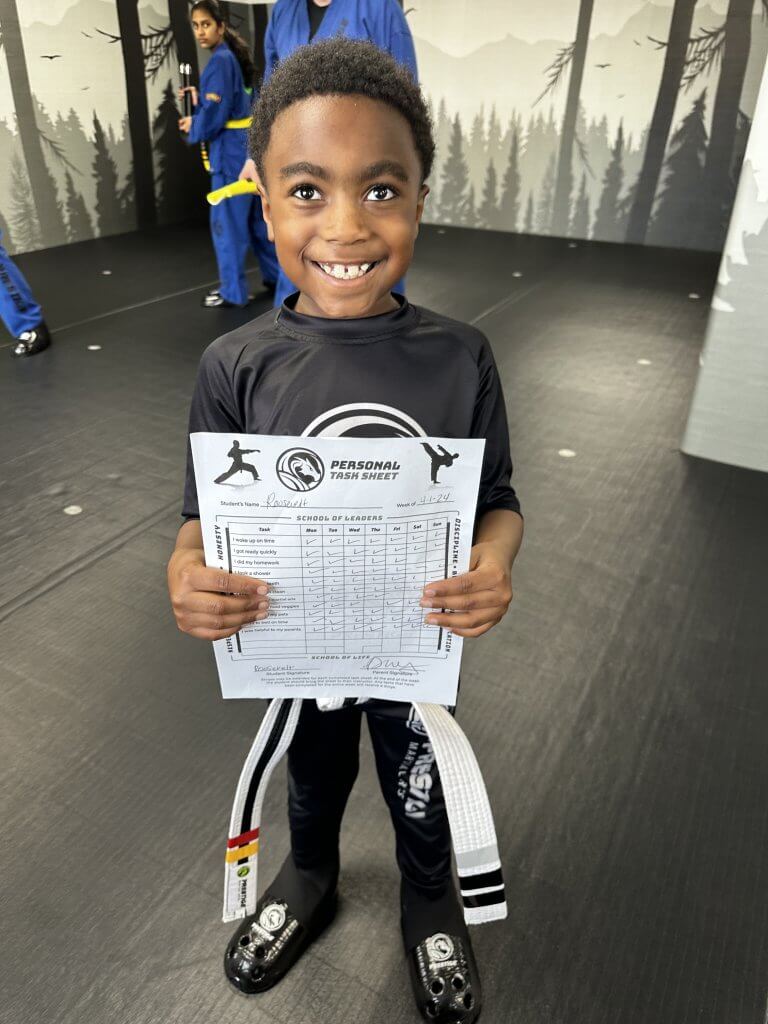
Introducing kindergarteners to martial arts classes can serve as a powerful catalyst in their journey toward self-assurance. These disciplines blend physical exercise with mental fortitude, teaching young learners the art of persistence, respect, and self-control. As they master each move, the pride in their growth ignites a spark of confidence that transcends the dojo, illuminating other facets of their lives.
The structured environment of martial arts provides a unique platform for kindergarteners to set and achieve goals, whether earning a new belt or mastering a complex technique. This goal-setting practice, nurtured within the supportive community of peers and instructors, fosters a sense of accomplishment and self-worth. Each achievement serves as a stepping stone, building their belief in their abilities with every new leap.
Martial arts balance the physical aspect of learning with the development of inner strength, encouraging young children to face challenges head-on. Through consistent practice, kindergarteners learn the value of resilience, discovering that falling is part of the journey to standing tall. This lesson in perseverance, cloaked in the thrill of movement and exercise, empowers them to approach life’s hurdles with a brave heart and a steady mind.
Beyond the kicks and punches, martial arts imbue kindergarteners with invaluable life skills such as discipline, focus, and respect for others and themselves. These skills, cultivated in tandem with physical prowess, sculpt a well-rounded individual brimming with confidence. Engaging in martial arts not only enhances their physical health but also weaves a protective armor around their self-esteem, preparing them to navigate the world with poise and assurance.
The journey doesn’t end as they bow in respect in their martial arts class.
12. Praise them the right way.

In the orchestra of upbringing, praising a kindergartener harmoniously can elevate the melody of their confidence. It’s crucial that accolades are not just scattered like confetti but bestowed like medals, earned and specific. Commendation, when tied to a precise action or effort, reinforces the behavior that adults wish to see flourish. This method empowers children, convincing them that their efforts are noticed and valued, thus motivating further endeavors and exploration.
However, the art of praise extends beyond recognizing achievements; it encompasses acknowledgment of effort and resilience. This distinction teaches kindergarteners that the journey holds as much value as the destination. Such an approach fosters a growth mindset, encouraging them to view challenges as opportunities to learn and grow rather than obstacles to fear and avoid. It’s a subtle yet profound lesson in perseverance and the pursuit of excellence, traits that underpin a confident individual.
Moreover, sincere and genuine praise has a resonance that echoes in a child’s heart, much more so than hollow or exaggerated flattery. Children, with their keen perception, can distinguish between the two, gravitating towards authenticity. When they feel truly seen and understood for their endeavors, it solidifies their sense of self-worth and bolsters their confidence, setting a foundation for their development into self-assured individuals.
Lastly, amidst the flurry of applause, it’s paramount for adults to encourage kindergarteners to practice self-praise. Teaching them to recognize their achievements and to celebrate their progress instills an internal compass of self-approval. This skill, nurturing an inner voice of encouragement and pride, becomes a lifelong resource for resilience, happiness, and, fundamentally, confidence.
13. Let them overhear you speaking positively about them to others.
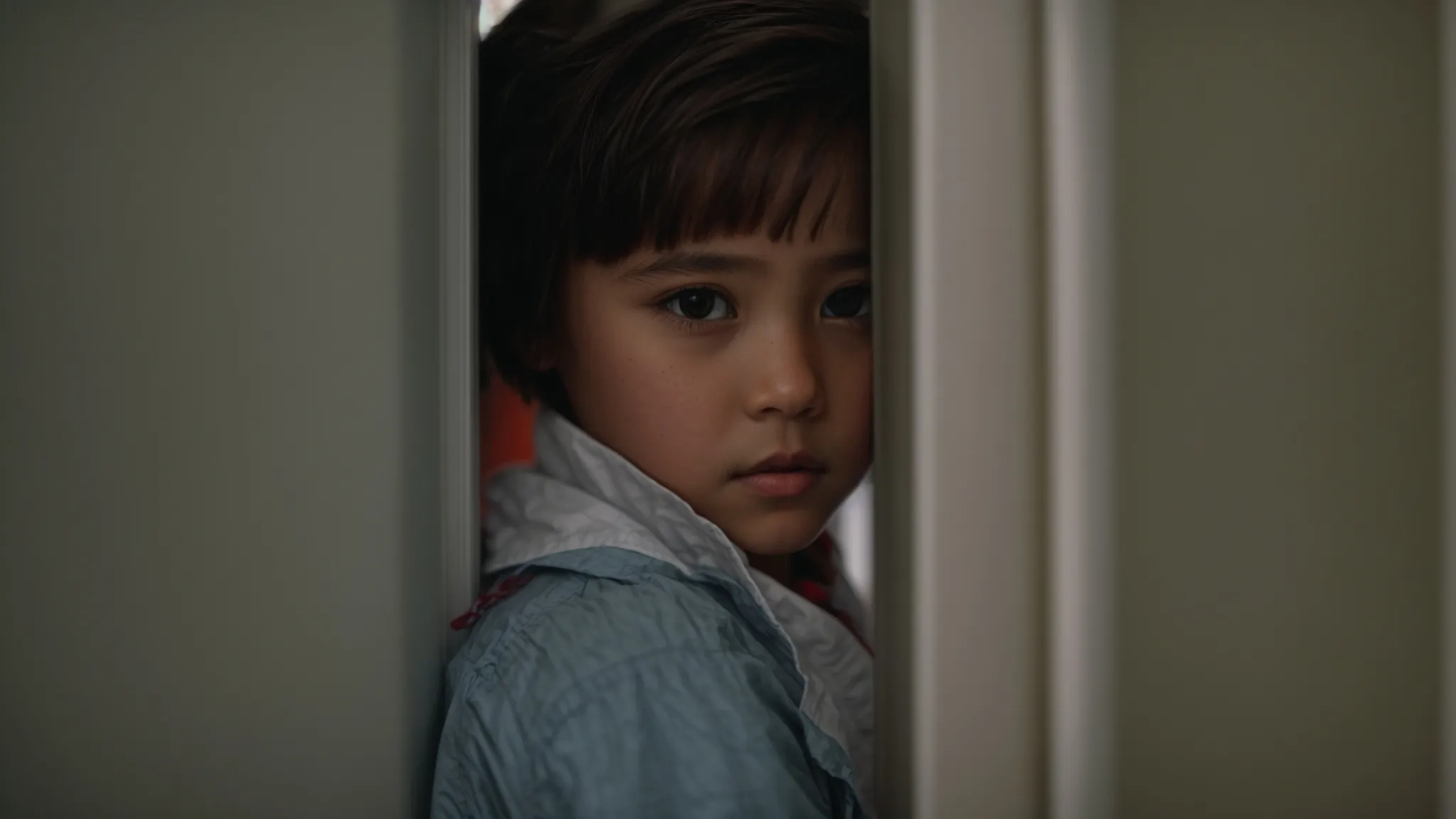
In the symphony of a child’s development, overhearing their guardians speaking positively about them to others acts as a crescendo of affirmation, amplifying their sense of self-worth. It’s a subtle melody that resonates deeply within a kindergartener, seeding an inner conviction of being valued and respected. This powerful method of indirect praise weaves a protective quilt of confidence around them, sheltering their burgeoning self-esteem from the chill of doubt and insecurity.
Imagine a child, hidden around the corner, as their ears catch the gentle waves of commendation flowing from their parent’s lips: a scenario as deliberate as it is serendipitous. Such moments, though fleeting, are potent draughts of emotional nourishment, fortifying their courage and determination.:
| Listener | Speaker | Words of Praise |
|---|---|---|
| A child | A parent | “You should have seen how well they shared today. I’m truly proud.” |
| A child | A teacher | “Their curiosity is boundless; it makes teaching a joy.” |
| A child | A caretaker | “They tackled that puzzle with such patience. It’s impressive.” |
This strategic deployment of praise, designed to be overheard, shifts the paradigm of confidence-building from a direct approach to an ambient assurance. It transforms the environment into a nurturing space where positive affirmations float in the air, ready to be absorbed by young minds. This technique not only bolsters their self-esteem but also models how to recognize and articulate the good in others, imbuing them with social grace and empathy.
Ultimately, the act of letting kindergarteners overhear affirmative conversations about them is akin to planting saplings of pride in the fertile grounds of their hearts. Over time, these saplings grow into towering trees of confidence, rooted in the knowledge of their worth as seen through the eyes of those they love and respect. It’s a masterful stroke in the art of confidence cultivation, leveraging the power of words to shape a child’s self-perception and empower their journey through life.
Praise echoes in the halls of growth, painting a picture of belief and admiration. Yet, the path to true confidence weaves through the garden of uniqueness, where every flower blooms at its own pace.
14. Resist comparing them to others.

In the garden of growth where confidence takes root, comparing a kindergartener to their peers acts like a shadow that stunts their natural blossoming. Such comparisons, often unintended, can sow seeds of doubt and inadequacy in a young mind. Instead, recognizing each child as a unique individual with their distinct talents and pacing is crucial.
Highlighting the achievements and improvements of a kindergartener without juxtaposition against another fosters a nurturing environment for self-esteem to flourish. This approach affirms their progress, anchoring their sense of worth in personal development rather than competitive standing. By focusing on their journey, parents and teachers can water the budding confidence with the nourishment it needs to grow.
The story of confidence-building is marked by understanding and compassion:
- It begins with acknowledging every small step forward and celebrating the effort over the outcome.
- Continues with gentle guidance, steering them through challenges with encouragement rather than comparison.
- And culminates in the kindergartener recognizing their value, and independent of others around them.
By resisting the inclination to compare, adults carve out a space where kindergarteners can explore their strengths and weaknesses at their own pace. This sanctuary, free from the pressure of competition, allows confidence to thrive, setting the stage for a lifetime of positive self-regard and resilience.
Shifting gears, we enter a realm where action and responsibility intertwine. Ready for the next step? Let’s empower them with tasks that not only teach but also build character.
15. Give age-appropriate tasks around the house or classroom.
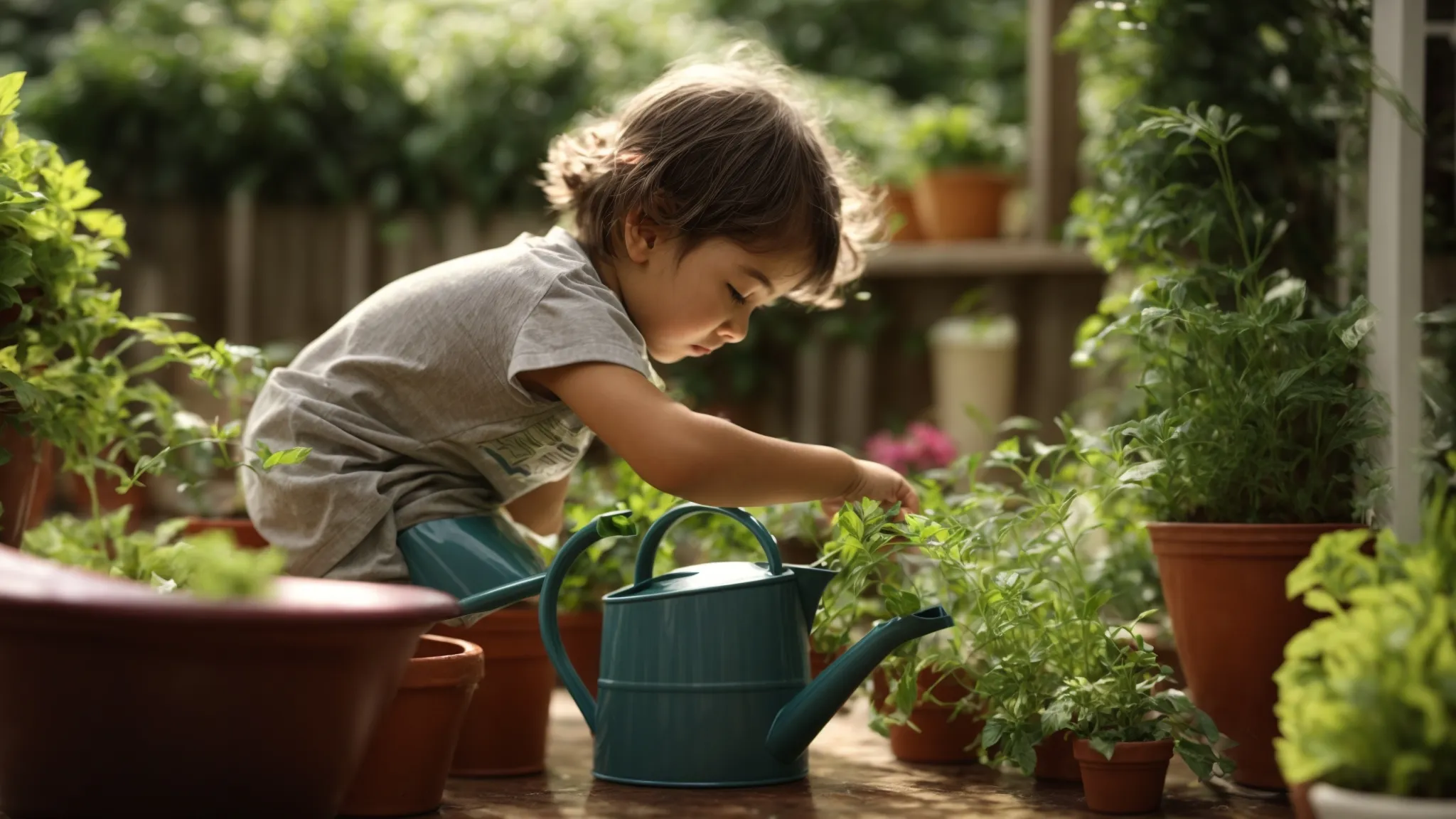
Assigning age-appropriate tasks to kindergarteners is akin to planting seeds of responsibility that blossom into the flowers of confidence. These tasks, whether at home or within the classroom walls, serve as tangible evidence of trust in their abilities. Such trust nurtures a burgeoning sense of pride and achievement in young hearts.
For these young learners, every successfully completed task is a stepping stone towards independence. It sends a clear message: their contributions are both valued and valuable. This realization is pivotal for their self-esteem, engraving a sense of competence and self-efficacy within their developing identity.
The selection of tasks, however, demands thoughtful consideration to ensure alignment with their developmental stage:
| Task | Location | Skill Development |
|---|---|---|
| Watering plants | Home | Responsibility, Care for Nature |
| Setting the table | Home | Organization, Sequence |
| Sorting recyclables | Classroom | Categorization, Environmental Awareness |
| Cleaning up toys | Classroom | Teamwork, Cleanliness |
This table presents a snapshot of how simple tasks, tailored to their environment, foster a range of skills. Through these efforts, kindergarteners not only polish their capability to carry out responsibilities but also their confidence to undertake new challenges. The journey from ‘I need help’ to ‘I can do this’ flourishes in such nurturing atmospheres, laying a solid foundation for lifelong self-reliance and confidence.
Next, we elevate their environment to match their growing esteem. By decorating spaces with their creations, we stitch their essence into the fabric of daily life.
16. Cultivate their sense of belonging by hanging their portraits or artwork around the home or classroom.

Adorning the walls of a home or classroom with the portraits and artwork of kindergarteners is a visual anthem of their belonging and acceptance. It’s a gesture that sings praises of their creativity, making the space a gallery of their evolving self-expression. This acknowledgment acts as a beacon, illuminating their sense of belonging in a community that cherishes their contributions.
Each displayed piece, whether a splash of color on canvas or a pencil sketch, stands as a testament to their unique place within the collective. The action of selecting and hanging their art sends a powerful message: their voice and vision matter. This exterior mirror of their interior worlds fosters a deep-rooted feeling of pride and place, fortifying their confidence with each passing glance.
Moreover, the act of recognition through exhibition nurtures a seed of self-worth that flowers into confidence. It invites dialogue and appreciation, weaving the child’s artistic journey into the fabric of daily life:
| Artwork | Location | Impact on Child |
|---|---|---|
| Watercolor landscape | Home living room | Enhances creativity and family connection |
| Pencil self-portrait | Classroom wall | Boosts self-identity and class belonging |
| Clay sculpture | School hallway | Encourages three-dimensional art exploration and school pride |
| Group mural | Library entrance | Promotes teamwork and community engagement |
This table highlights the breadth of impact that showcasing their art can have on a child’s self-esteem and sense of inclusion. By nurturing an environment where their creative outputs are celebrated, adults pave a path for kindergarteners to walk with confidence, knowing they have a supportive and appreciative audience for their endeavors.
Surrounding them with their own creations plants the seeds of pride and a sense of place. Now, let’s empower them by steering the helm of decision-making into their small, capable hands.
17. Let them make age-appropriate choices.

Allowing kindergarteners to make age-appropriate choices is like handing them the pen to script their own stories of self-discovery and empowerment. This practice, deeply embedded in the fabric of their daily experiences, cultivates a garden where the seeds of confidence sprout and flourish. When a child selects their outfit for the day or chooses between apples and bananas for a snack, they’re not just making a decision; they’re exercising autonomy, fostering a sense of control over their world.
The act of making choices, seemingly simple, is a powerful catalyst for self-assurance. It teaches kindergarteners that their preferences and opinions are valued, echoing the message that they are capable and trusted members of their community. Such empowerment bolsters their confidence, encouraging them to engage more fully in the kaleidoscope of activities that color their world.
Moreover, by navigating the consequences of their choices, whether positive or unexpected, children learn problem-solving skills. This hands-on approach to learning and adapting imbues them with resilience, preparing them to face the larger decisions and challenges that life will inevitably present. Thus, the practice of making age-appropriate choices serves not only to build confidence but also to plant the roots of independence and self-reliance in fertile soil.
Finally, guiding kindergarteners as they make their own choices, while ensuring they understand the boundaries and consequences, offers a balanced framework of freedom and safety. Parents and teachers play a crucial role in this dance, leading with a gentle hand that both supports and steps back, allowing the child to lead. This harmonious approach nurtures a confident young mind, ready to explore the world with enthusiasm and a strong sense of self.
Empower them to choose, paving the way for independence. Next, we usher them into a realm of discovery, where trying new things becomes the key to unlocking untapped potential.
18. Encourage them to try new things to develop new skills.
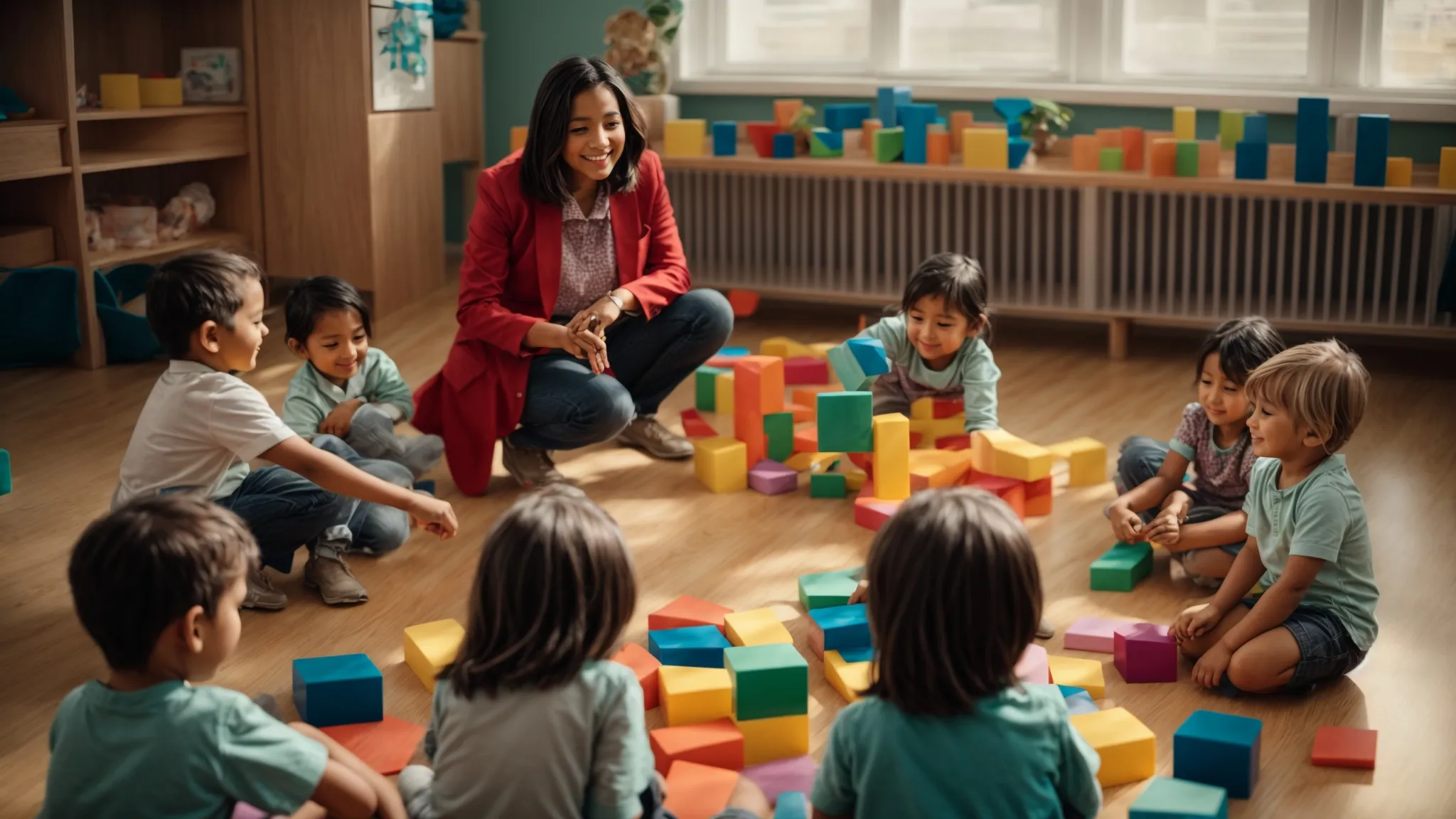
Encouraging kindergarteners to embrace new experiences serves as the scaffold for their burgeoning sense of confidence. Each novel encounter is a brushstroke on the canvas of their development, painting skills and self-assurance with broad, vibrant strokes. The act of venturing into uncharted territories, be it through a new game or a different art project, whispers to them the exciting promise of growth and discovery.
As they step into these new endeavors, they engage in a silent dialogue with success and setback alike, learning that both are integral to their journey. This dialogue fosters resilience, planting the seeds for a robust confidence that is not easily shaken by failure. The experience of overcoming the initial trepidation of trying something new reinforces their belief in their capabilities:
- Mastering a new puzzle enhances problem-solving skills.
- Dancing to a different rhythm cultivates creativity and physical coordination.
- Exploring a new storybook broadens language and literacy skills.
Parents and educators play a pivotal role in this process, acting as the gentle winds beneath the kindergarteners’ wings, urging them forward. By offering praise for the effort rather than the outcome, they emphasize the value of perseverance and curiosity. The child learns that their worth is not measured by perfection but by the courage to try and the willingness to learn.
This practice of nurturing new skills through varied experiences equips kindergarteners with a toolbox of competencies and the confidence to use them. As they accumulate successes and navigate failures, their self-esteem grows, readying them for the broader challenges of life with a resilient and adventurous spirit.
19. Help them discover their interests and passions.
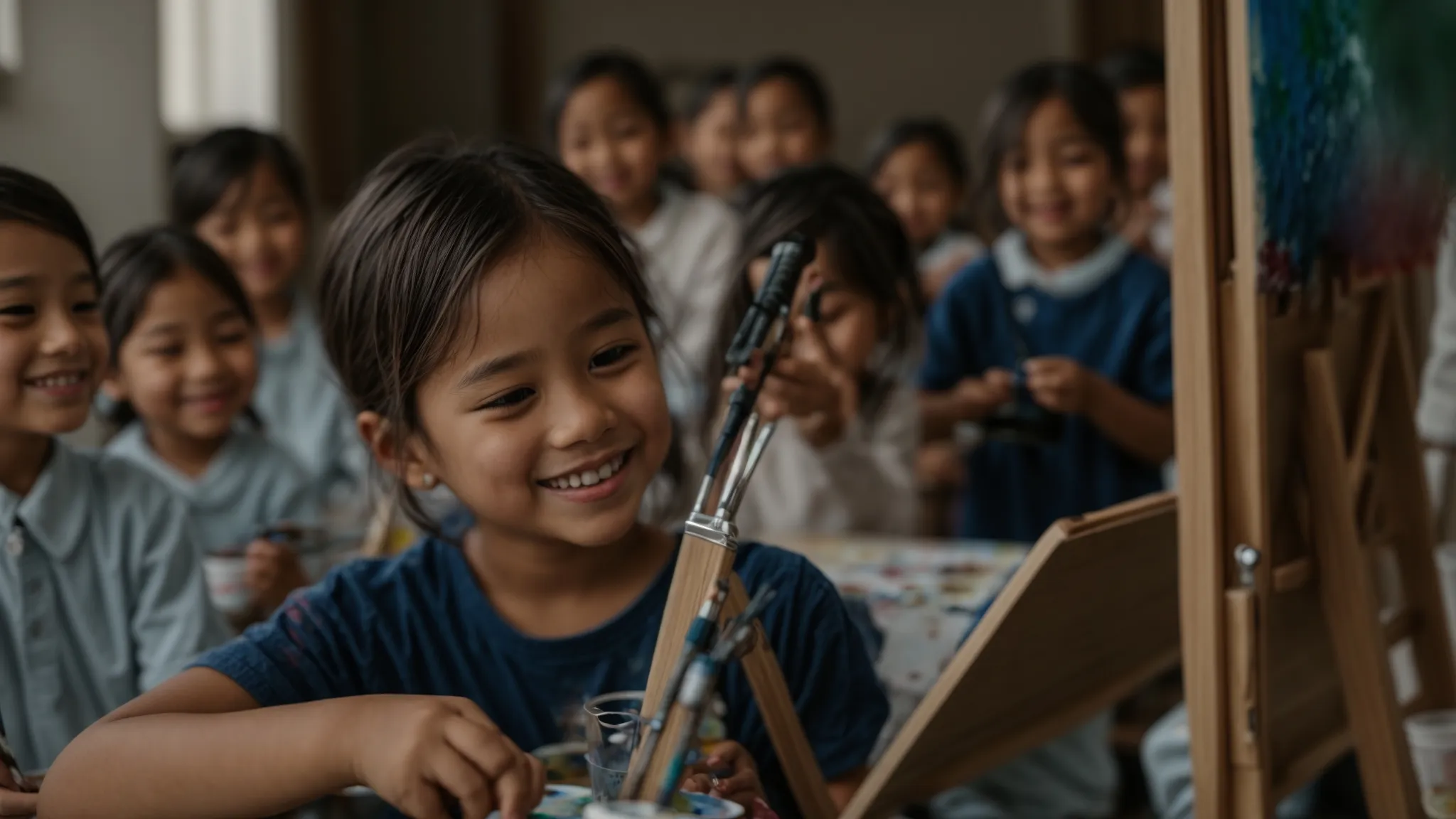
Guiding kindergarteners to unearth their interests and passions is like setting them on a voyage of self-discovery, a journey that significantly bolsters their confidence. When a child identifies an activity or subject that sparks joy and curiosity within them, it ignites a sense of purpose and belonging. This profound connection to their interests paves the way for a fortified self-esteem, as they begin to understand and appreciate their unique place in the world.
It is through the gentle encouragement of parents and educators that these young explorers are afforded the freedom to experiment with various domains, be it art, music, science, or literature. The support and resources provided for this exploration act as the wind under their wings, allowing them to soar into realms of newfound passion. Witnessing a child find their element is a testament to the nurturing environment that surrounds them, an environment ripe for the growth of confidence.
The discovery of personal passions teaches kindergarteners more than just skills related to their interests; it instills in them the value of perseverance and the joy of mastery. As they dedicate time and effort to their chosen pursuit, they learn the rewarding feeling of progress and achievement. This sense of accomplishment fuels their self-esteem, encouraging them to tackle challenges with enthusiasm and resilience.
Moreover, as children share their passions with peers and receive positive feedback, they learn the importance of validation and the role it plays in building confidence. This social aspect of discovering and pursuing interests fosters a sense of community and support, further uplifting the child’s confidence. Encouraging the pursuit of individual passions, therefore, creates a multifaceted foundation for the development of a confident and self-assured kindergartener.
Nurturing curiosity, we light the path toward self-discovery. Now, it’s time to arm them against the specter of doubt.
20. Help them overcome the fear of failure.

Helping kindergarteners overcome the fear of failure is akin to teaching them to navigate the stormy seas with resilience and courage. This crucial aspect of building confidence involves reframing failure as a stepping stone rather than a stumbling block. By encouraging them to view each misstep as a valuable lesson, parents and educators instill a mindset that embraces challenges as opportunities for growth.
This transformative perspective shifts the focus from the fear of making mistakes to the excitement of learning and discovery. It’s a lesson that turns the classroom and home into laboratories where experimentation, not perfection, is the goal. Central to this approach is the adults’ response to failure: a calm acknowledgment and constructive feedback that guide the child toward problem-solving and perseverance.
| Scenario | Adult Response | Lesson for the Child |
|---|---|---|
| Trouble with a new puzzle | “What strategies can we try?” | Problem-solving and resilience |
| Mistake in a drawing | “What could this mistake turn into?” | Creativity and flexibility |
| Difficulty in learning a new skill | “Let’s practice a bit more tomorrow.” | Persistence and growth |
Equipping them with the tools to analyze and learn from errors fosters a deeper understanding of failure’s role in learning. When children grasp that every attempt, successful or not, enriches their knowledge base, they begin to shed the weight of anxiety and step more confidently into new endeavors. This liberation from fear paves the way for a bold exploration of their capabilities.
Moreover, by celebrating the effort rather than just the outcome, parents and teachers shift the emphasis to the process of learning. Acknowledging the bravery it takes to try something new or challenging reinforces a child’s self-worth, independent of the result. Thus, helping kindergarteners overcome the fear of failure is a cornerstone in constructing a resilient foundation for lifelong confidence.
Navigating past the shadows of doubt, they stand ready for what comes next. Let’s weave a tapestry where words and emotions flow freely.
21. Encourage them to express their feelings.
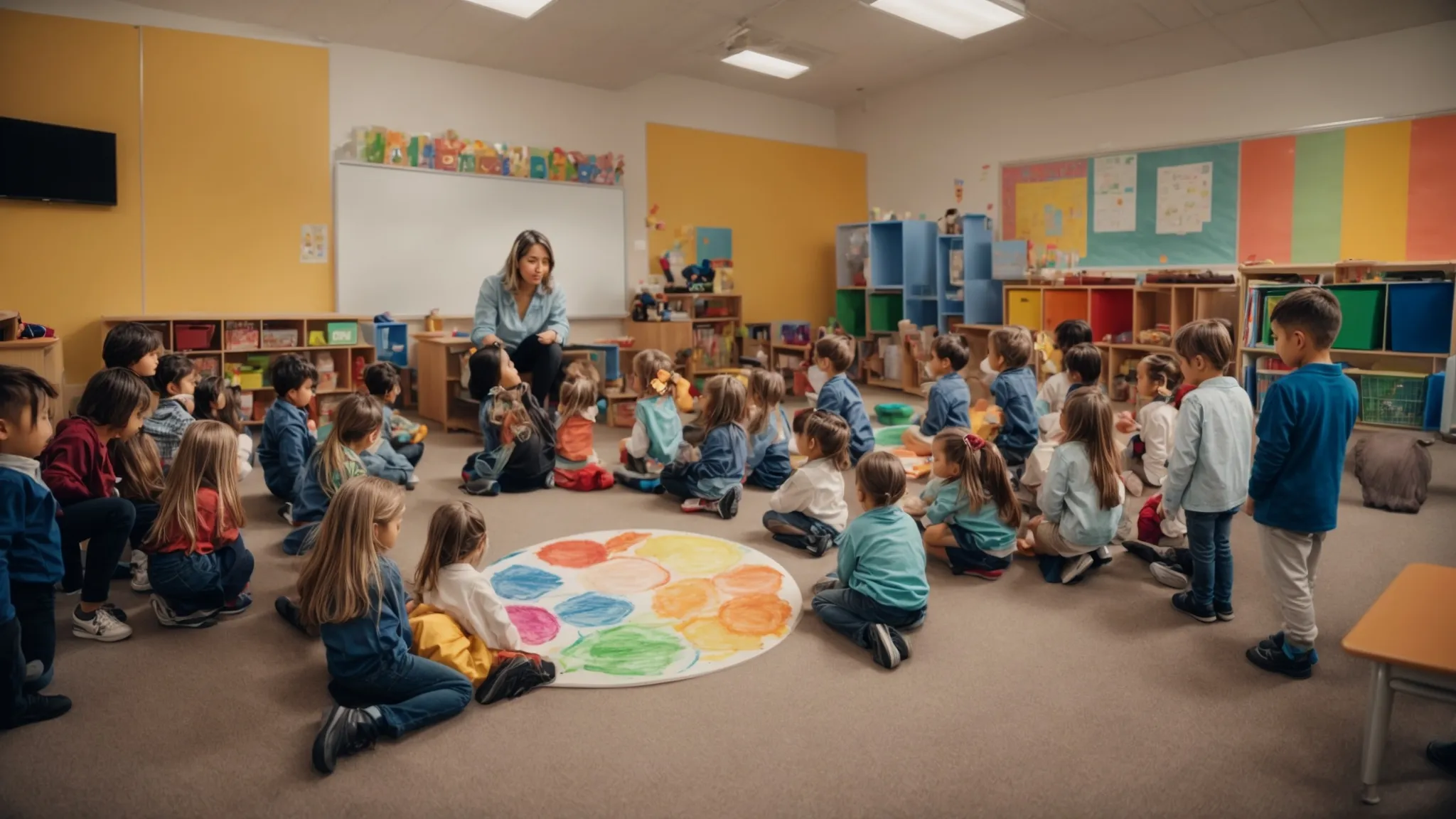
Encouraging kindergarteners to express their feelings is like gifting them a compass in the vast landscape of emotional intelligence. Through this act, they learn to navigate their inner world, identifying and articulating their emotions with clarity and confidence. This foundational skill becomes a cornerstone in their journey of self-discovery and interpersonal relationships.
When a child feels safe to share their emotions, whether joy or frustration, they unfurl the sails of confidence in their ability to communicate. This trust in their surroundings and the people within it acts as an anchor, steadying their sense of security as they explore the depths of their feelings. It is through this exploration that they grow more attuned to their emotional well-being, bolstering their overall confidence.
The patient listening of a parent or teacher transforms into a mirror, reflecting the child’s feelings with validation and empathy. This mirroring process not only fortifies the child’s understanding of their emotions but also reinforces the belief that their feelings are valuable and worthy of attention. Such recognition nourishes their self-esteem, planting seeds of confidence that will flourish in both their personal and academic life.
Moreover, by encouraging expression in a variety of forms—be it through words, art, or play—adults provide kindergarteners with multiple pathways to convey their feelings. Recognizing that each child has a unique emotional language, this approach embraces diversity in expression. It fosters an environment where every child can find their voice and, in doing so, build a resilient foundation of confidence that supports their emotional health and interpersonal skills.
Words of encouragement pave the path for emotional literacy, unlocking the gates to their hearts. But as the voyage continues, it’s pivotal to differentiate the deed from the doer.
22. Make sure they know you’re upset with their choices, not with who they are.
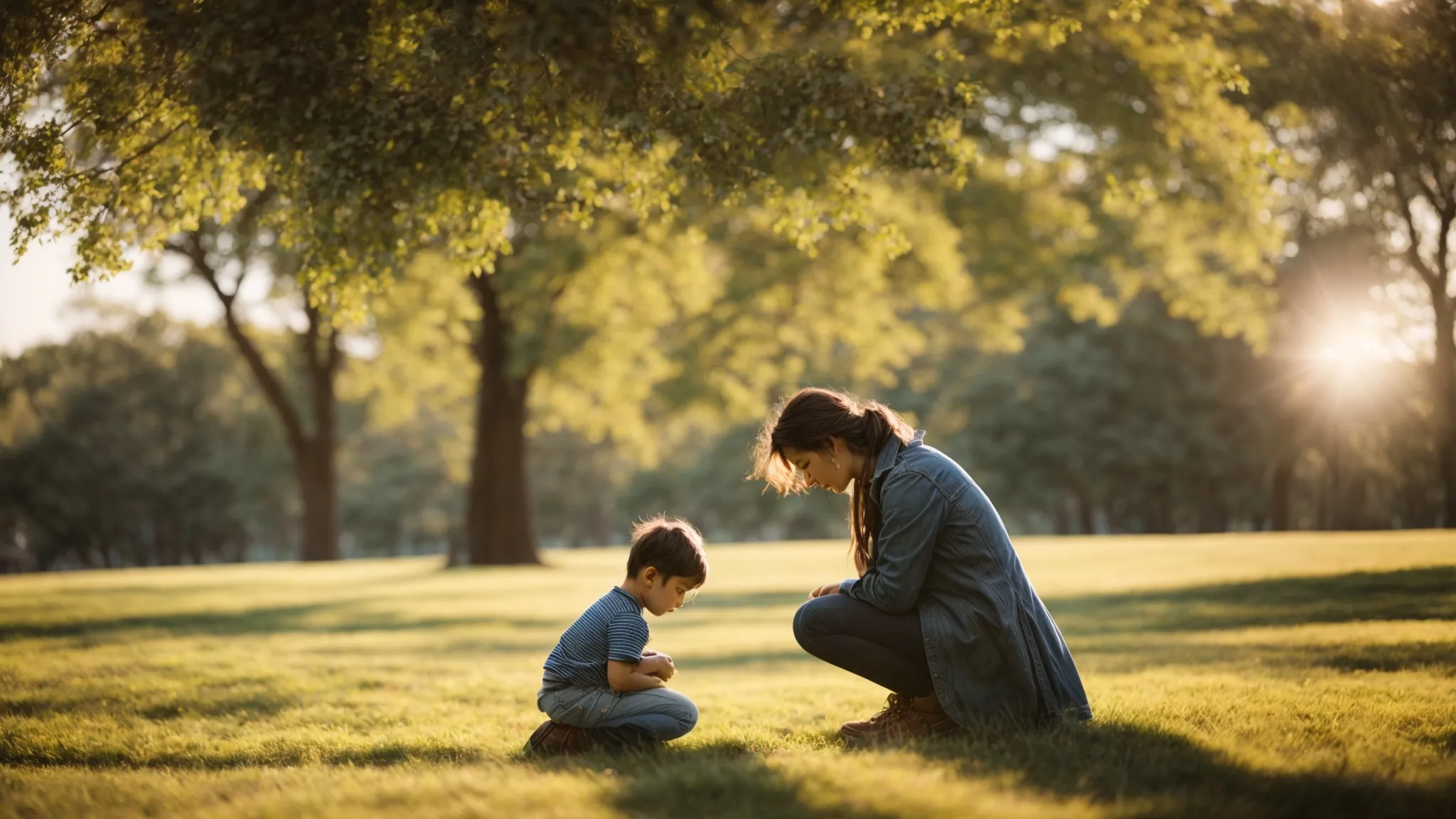
In the realm of nurturing confident kindergarteners, it’s crucial for parents and teachers to distinguish between disapproval of actions and disapproval of the child themselves. When a young learner makes a choice that leads to admonishment, they should feel that it’s their decision, not their character, being questioned. This distinction lays a foundation of security, enabling children to view mistakes as learning opportunities rather than reflections of their worth.
Communicating disappointment in a child’s choices, while assuring them of their inherent value, strengthens their self-esteem. Such conversations should be imbued with empathy and understanding, as they reinforce the notion that everyone makes mistakes. This approach teaches kindergarteners that their abilities and potential are not diminished by a poor decision, fostering an environment where confidence can thrive amidst learning curves.
Moreover, when addressing undesirable behavior, using language that focuses on the specific action, rather than generalizing the child’s behavior, is imperative. Statements like, “I’m upset because you didn’t share your toys,” rather than, “You’re being selfish,” help the child understand the impact of their actions without casting shadows on their personality. This careful choice of words protects the delicate bloom of self-worth in young minds, nurturing a resilient sense of self-confidence.
Ultimately, ensuring kindergarteners understand that love and acceptance from their significant adults are unwavering, even when their choices are not ideal, is a powerful lesson in confidence. It equips them with the courage to try new things, make mistakes, and grow from them, knowing that their value as individuals remains constant. This unconditional support is the bedrock upon which confident, capable children are raised, ready to face the world with optimism and self-belief.
Acknowledging their missteps without dimming the spark of their being is key. Now, ignite that spark by weaving a tapestry of optimism and assurance around them, where friends and mentors alike shine as beacons of potential.
23. Surround them with positive, confident people (including their friends).

In the grand narrative of a kindergartener’s development, the characters that grace the pages of their life story play pivotal roles in shaping their confidence. Surrounding them with individuals who radiate positivity and confidence, including their peers, acts like sunlight on young plants, encouraging them to stretch upwards with vigor. This fosters a healthy environment where children feel empowered to emulate the assuredness they observe.
Friends who approach life with optimism and bravery serve as living lessons in confidence, demonstrating through actions that challenges are surmountable. When kindergarteners witness their peers facing fears and embracing new experiences with enthusiasm, it sparks a flame of courage within them. This shared journey of discovery and triumph among friends paints a vivid tableau of mutual growth and bolstered self-esteem.
Moreover, interacting with confident adults establishes a template of self-assurance for young minds to aspire to. Parents, teachers, and caregivers who navigate life with a positive outlook and unwavering self-belief present a beacon for kindergarteners. Their demeanor, reactions to adversity, and interaction with the world at large serve as a powerful curriculum in the school of confidence.
Ultimately, the community that encircles a kindergartener acts as the soil in which the roots of their confidence can firmly anchor. Ensuring that this community is imbued with individuals who reflect the values of positivity and self-confidence prepares children to face the world with optimism and strength. It is within this nurturing circle that young learners find the support and inspiration to rise to the full height of their potential.
As we weave a tapestry of confidence around them, the inclusion of steadfast and optimistic companions forms an essential thread. Now, imagine elevating this collective journey of self-assurance by celebrating their milestones with a Wall of Fame.
24. Create a Wall of Fame to recognize their achievements.

Establishing a ‘Wall of Fame’ in a home or classroom sets the stage for a visual celebration of kindergarteners’ achievements, big or small. By dedicating a space to showcase their milestones, parents and educators send a clear message: every effort is valued, every success worth celebrating. This tangible acknowledgment acts as a beacon of pride, illuminating the worth of their accomplishments in their young eyes.
The selection of achievements to display should mirror the diversity of each child’s strengths, from academic milestones to acts of kindness. Highlighting various forms of success underscores the idea that excellence comes in many forms, teaching kindergarteners to appreciate the multifaceted nature of achievement. It fosters an environment where each child can see reflections of their unique contributions, enhancing their sense of belonging and self-worth.
Regularly updating the Wall of Fame to reflect new achievements keeps the excitement alive, making it a dynamic testament to the children’s growing capabilities. This continuous cycle of recognition fuels kindergarteners’ motivation to pursue their interests and face new challenges. They learn that growth is an ongoing journey, replete with opportunities to add new feathers to their cap of achievements.
Moreover, the Wall of Fame serves as a conversation starter among peers and adults alike, promoting a community culture of support and encouragement. When kindergarteners observe the achievements of their classmates celebrated, it inspires a collective spirit of striving and pride. Such shared moments of recognition strengthen the communal bonds, embedding confidence not just in the individual, but within the entire cohort.
The Wall of Fame stands as a testament to their hard-earned victories. Now, envelop them in the warmth of your embrace!
25. Shower them with hugs!

In the journey to foster confidence in kindergarteners, the power of a simple hug cannot be understated. This physical expression of love and support serves as a non-verbal reassurance, enveloping the child in a cocoon of security and belonging. It whispers a silent message of unconditional support, reinforcing their self-worth and bolstering their courage to face the challenges ahead.
Every hug is a building block in the fortress of a child’s confidence, laying a foundation of trust and acceptance that encourages them to explore and grow. In the warmth of an embrace, kindergarteners find the strength to step out of their comfort zones, emboldened by the knowledge that they have a safe harbor to return to. This tangible manifestation of love is instrumental in cultivating a resilient spirit, ready to embrace life’s adventures.
Moreover, hugging fosters a deep-seated connection between the child and their parent or teacher, reinforcing the notion that they are a valued and integral part of their community. This connection is crucial for developing a confident individual who feels supported in their achievements and their very being. The emotional bond forged through this simple gesture lays the groundwork for a confident outlook that permeates every aspect of their lives.
Ultimately, showering kindergarteners with hugs is a profound yet effortless way to nurture their self-esteem and confidence. It’s a reminder that amidst the complexities of education and growing up, the simplest acts of affection hold the greatest power to inspire and uplift. In the embrace of a loved one, a child finds the courage to believe in themselves, which becomes the cornerstone of their confidence as they navigate the path of learning and development.
Frequently Asked Questions
Why is positive self-talk important for boosting a child’s confidence?
Positive self-talk serves as a buoyant life vest in the stormy seas of childhood challenges, empowering young minds with resilience and a sense of self-worth. It intricately weaves a tapestry of confidence that blankets a child, shielding them from the icy fingers of doubt and fear.
What role does parental involvement play in nurturing a kindergartener’s self-esteem?
Parental involvement acts as a nurturing sun, essential for the blooming of a kindergartner’s self-esteem, providing a steady warmth of encouragement and support. It’s the fertile ground on which the seeds of confidence germinate and flourish, shaded by pride and watered with praise, in the garden of education.
How can children benefit from being given age-appropriate responsibilities?
Assigning children age-appropriate responsibilities is akin to planting seeds of discipline and empowerment within the fertile soil of their young minds. This practice not only cultivates an environment ripe for personal growth and self-reliance but also serves as a cornerstone in the architecture of their burgeoning sense of pride and achievement.
From the sunrise hues of preschool days to the golden afternoons of kindergarten, the journey through educational milestones is peppered with opportunities for learning beyond the traditional curriculum. A teacher’s guide extends far beyond the confines of textbooks or the digital landscapes of PDFs and email addresses. It ventures into the realm of life skills, where the act of balancing a workbook on one’s lap transitions seamlessly into the art of balancing responsibilities on one’s shoulders.
In the tapestry of childhood, each responsibility is a thread interwoven with lessons in mathematics, not just in the calculation of numbers but in the measurement of effort and reward. The simplicity of a preschooler assisting with setting a table, for example, mirrors the foundations of subtraction and addition. They learn that for every plate placed on the table, a space is filled, and for every task completed, a bead of confidence is added to the string of their self-esteem.
Parents and teachers alike stand as lighthouses, guiding the young navigators through the fog of uncertainty and fear that often shrouds new responsibilities. With every picture book read, with every pet fed, with every bed made, children are painting on the canvas of their character. They’re not merely moving toys from one corner of the room to another; they’re developing the fine motor skills and discipline necessary for success in school and beyond.
The echoes of praise for accomplished tasks, the symphony of encouragement in moments of failure, are the background music to a child’s growth. This melodic reinforcement fosters a mindset wherein mistakes are not specters to fear but stepping stones to mastery. The mindset, once seeded, blooms into a beautiful bouquet of optimism, resilience, and an enduring quest for knowledge.
In the laboratory of life, every chore assigned, every responsibility undertaken is an experiment in strengthening the sinews of the mind and heart. Like scientists, children hypothesize, ‘Can I do this?’, test their hypotheses through action, and reflect on the outcome. This cycle, an exquisite dance of trial and error, cultivates critical thinking and problem-solving skills, illuminating the path toward independence.
Moreover, age-appropriate responsibilities offer a buffer against the tempestuous seas of peer pressure and bullying, equipping children with the anchor of self-assuredness and the rudder of moral judgment. They emerge, not just as participants in the community of their immediate family but as contributors to the wider community, ready to lead with empathy and understanding.
As children ascend the spiral staircase of their formative years, every step taken, every responsibility embraced, is a leap towards the embodiment of their fullest potential. For within the heart of every task, lie the seeds of tomorrow’s leaders, innovators, and compassionate citizens – nurtured through the simple yet profound act of sharing in the responsibilities of their world.
Why is it crucial to avoid comparing kindergarteners to their peers in the context of confidence-building?
Comparing kindergarteners to their peers can undermine their burgeoning confidence and create a foundation of anxiety rather than empowerment, as every child’s journey of discovery and growth unfurls at its own unique pace, like a story waiting to be told.
Conclusion
Building confidence in kindergarteners is foundational to their development and success, both inside and outside the classroom.
Through unconditional love, positive reinforcement, and celebrating their achievements, we craft a nurturing environment that fosters self-esteem and resilience.
Offering them choices, encouraging trial and error, and engaging in their worlds of play positions them to navigate challenges with courage and persistence.
Acknowledging their emotions and steering clear of comparisons further solidifies their sense of self-worth.
Surrounding them with positive role models and enabling them to explore interests guide them towards discovering their unique potential.
Finally, simple acts of affection, like hugs, reinforce their confidence, assuring them of their valued place in our lives.
Embracing these practices paves the way for kindergarteners to blossom into confident individuals ready to embrace the world with optimism and strength.
